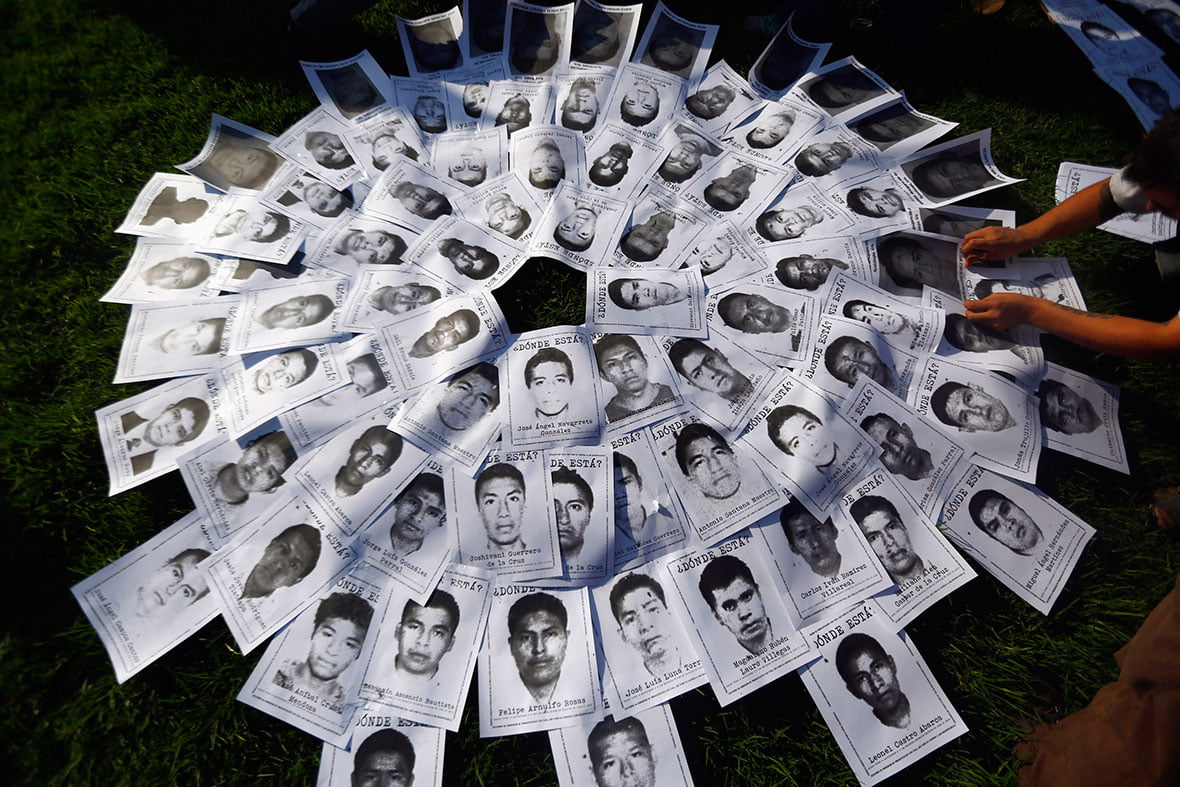A second mass grave has been found in rural Mexico a month after 43 student teachers went missing following an altercation with police in the town of Iguala. The missing students, along with the apparent involvement of local police and government officials in their suspected murders, has set off massive protests throughout the country. Things may be getting better south of the border, but rule of law issues continue to plague Mexico.
The origin of the current situation primarily dates back to a 2013 education reform program that all three of Mexico’s major political parties signed off on but generated a lot of controversy among students and teachers. The education reform bill sought to standardize evaluation and hiring processes, a monumental task in Mexico where teaching jobs are often bought and sold by individuals for their life-long tenure and above average salaries, with union and local government officials accepting kickbacks as part of the deal. But teachers, particularly in rural areas, complained that the reforms did little to address other major problems such as large classroom size, poor curriculum and few resources for schools. Fearing the government planned a mass firing to trim the education budget, protests began almost as soon as the reform package was announced.
Nowhere has the protests been as heated as Guerrero State where peaceful protests also mixed with renewed calls from local guerilla groups for an uprising against the government. Guerrero is one of the poorest states in Mexico, where education rates are low but the education sector is what provides for most families in the area. Thus, any attempt to change hiring or tenure practices not only threatens the jobs of individual teachers, but much of the region’s economy.
While numerous protests since 2013 have been met with a strong police response, little compares to what happened in Iguala on September 26. On that day, student teachers from Rural Teachers College Raúl Isidro Burgos of Ayotzinapa traveled to Iguala to protest outside a conference hosted by Maria de los Angeles Pineda, wife of Iguala’s mayor and the local president of the National System for Integral Family Development (DIF). Following the protest, the students claim they were trying to hitchhike back to their school while police claim they were trying to seize buses. In the end, police and gunmen opened fire on a bus, killing 6 and injuring several more. Another 56 students went missing that night, 43 of which have not been seen or heard from since. Some witnesses say the missing students were arrested by police while others say they were taken away by masked gunmen, now identified as members of Guerreros Unidos, a local drug cartel. Either way, the missing students and the discovery of two mass graves nearby is posing a major political problem for President Enrique Pena Nieto and his promises of less violence in a country plagued by it for the past decade.
The incident also underlines how intertwined government and organized crime has become in parts of the country. The 56 people arrested so far in connection with the missing students run the gamut from police officers and local officials to members of a local drug gang. The mayor of Iguala, his wife and the town’s police chief have all fled following the release of warrants for their arrest and amid allegations of direct connections with Guerreros Unidos. The governor of Guerrero resigned and there are calls for more action by the government, which so far has responded tepidly despite the general outcry.
As Uta Thofern points out, the continuing protests are now far more about the government’s role in this tragedy rather than the missing students themselves. In a country plagued by violence at the hands of both drug cartel and government security forces for the last 10 years, people are fed up. The rule of law is something that has become foreign to most Mexicans but the growing protests, far from Guerrero State where the students came from, demonstrate that it is something Mexicans desperately want. Even if those found in the second mass grave are the remains of the missing students – which Mexican officials claim they are despite testing not being complete – it will not be the end of this fight.
